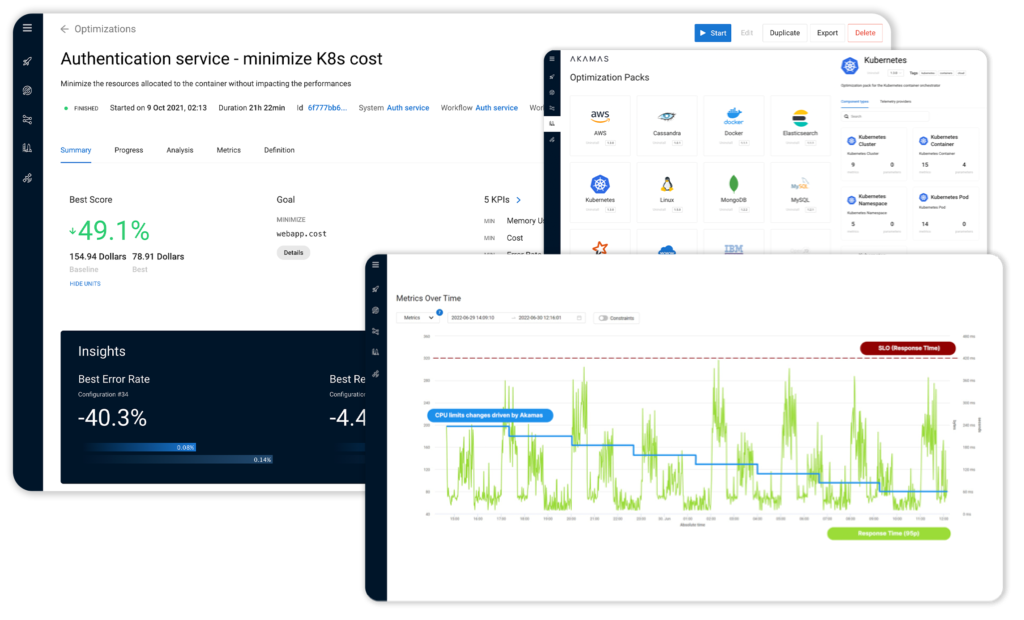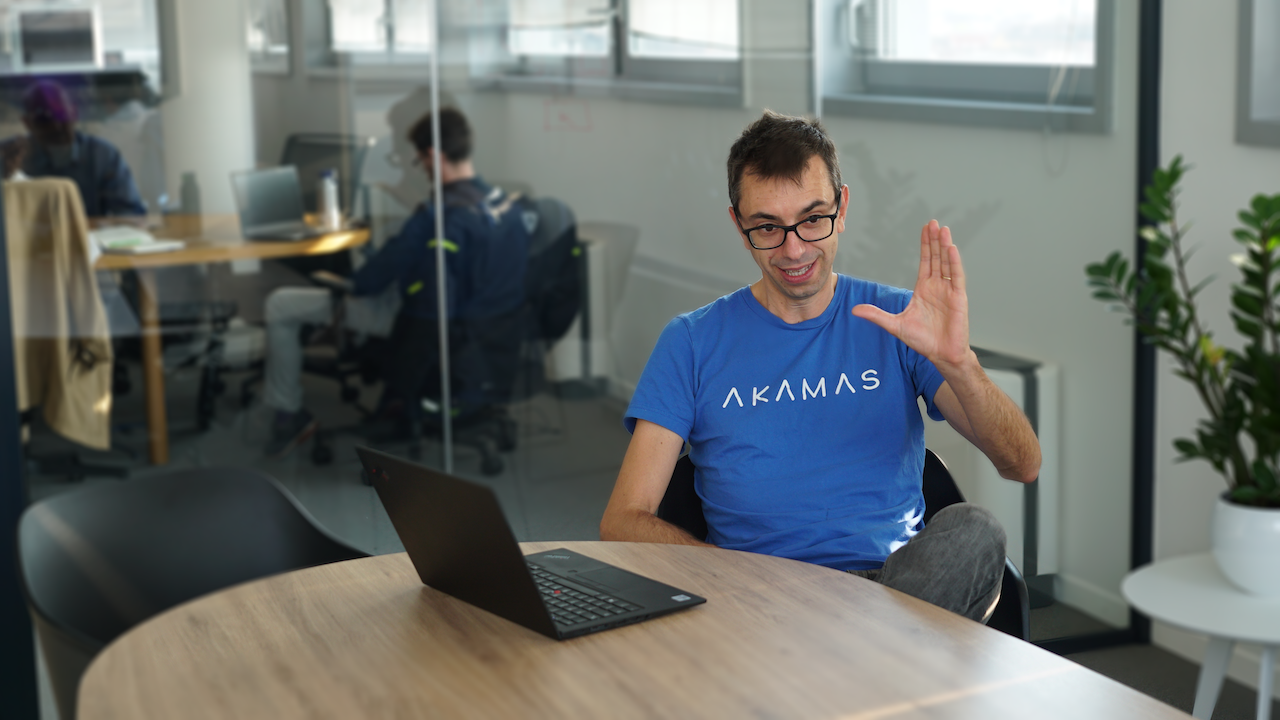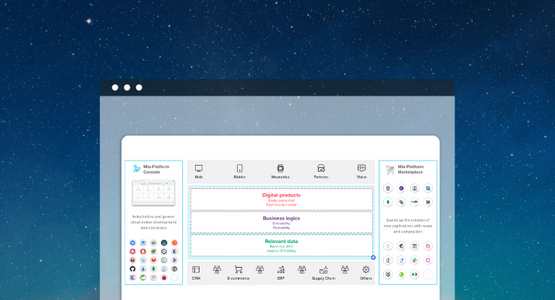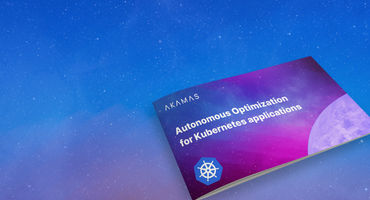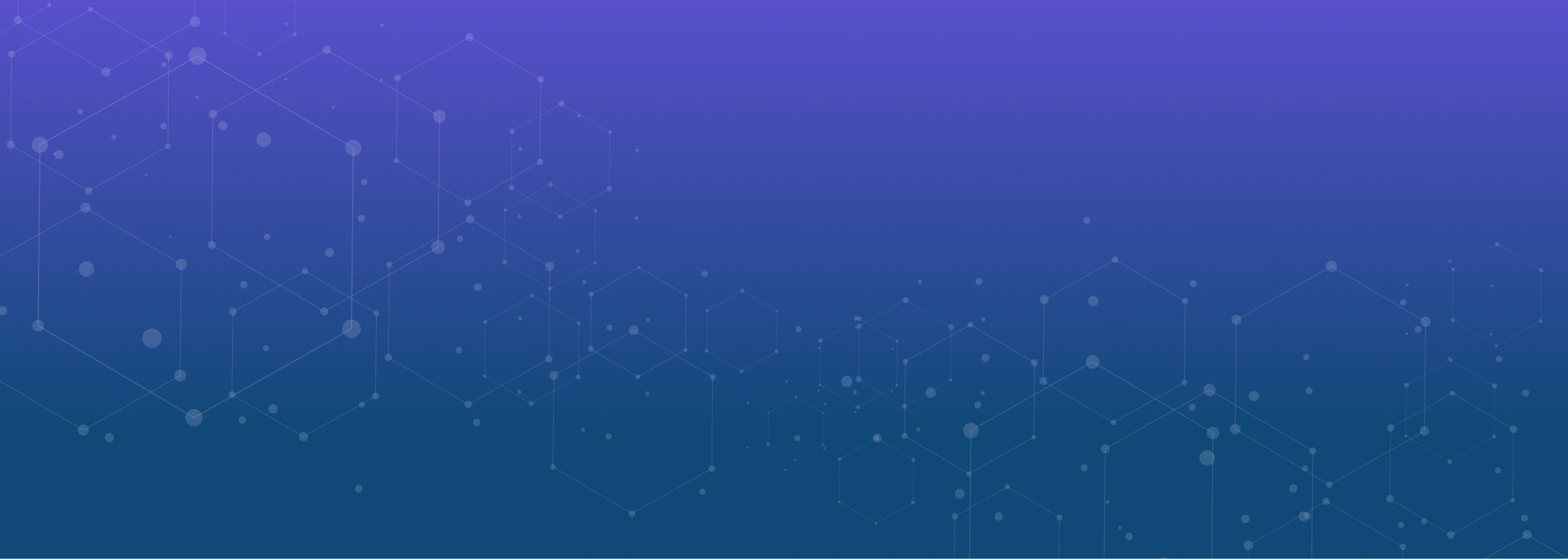
Last month the Akamas team had the pleasure to join 7000+ attendees as Silver sponsor of the KubeCon + CloudNativeCon North America 2022 conference organized by the Cloud Native Foundation (CNCF) in Detroit.
What a great time we had, meeting in person customers, partners, experts coming from around the globe and the whole CNCF vibrant community!
I’m pleased to share with you my thoughts and takeaways from the conference.
Where is Kubernetes now?
As we all know, Kubernetes is the de-facto operating system of modern cloud-native applications. It has been reported that about 5.6 million developers use Kubernetes worldwide, representing 31% of all backend developers. That is an impressive adoption considering that Kubernetes was first accepted in the CNCF program in 2016 (now being at the Graduate level). An estimated 96% of organizations are either using or evaluating Kubernetes (it was from 83% in 2020 and 78% in 2019).
This is reflected by the attendance to this event. According to the organization, there were about 7000 people in presence, not mentioning those joining remote sessions and virtual booths. While these numbers just match those from this year’s European event in Valencia (you can read my notes on that event here), nevertheless they represent a clear recovery from the previous year’s event in Los Angeles. I was also impressed by the total number of tweets related to the conference during this month: almost 100.000, confirming the tremendous traction that those topics are gaining.
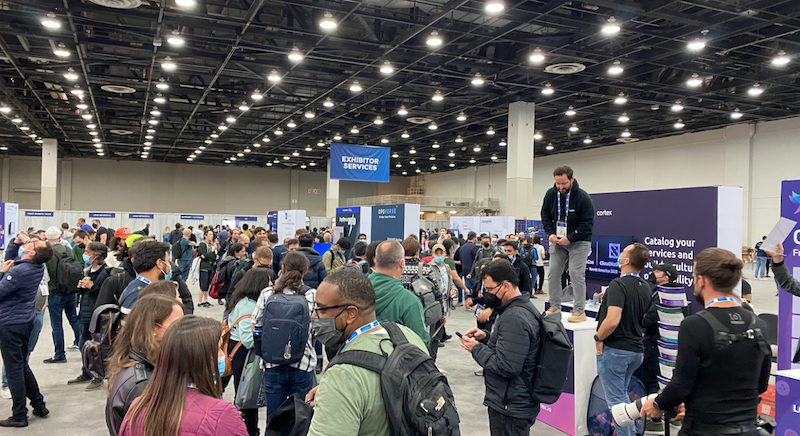
You might ask: all this is good, but where does Kubernetes technology stand in terms of maturity? How is the Kubernetes ecosystem evolving? And what are the implications of Kubernetes growing so fast in terms of adoption and interest?
Well, for sure things are moving fast. On the floor we discovered a number of new companies and solutions we had not been aware of, in particular in the area of container security and operations. Yet, the Kubernetes ecosystem is still somewhat fragmented and customers are still looking for solutions that can enable them to better manage the complexity of Kubernetes applications.
Let’s take for example a keyword that appeared on many vendor booths: “cost”. No surprise here as customers often find themselves in a quandary, as the way Kubernetes resource management mechanisms work prompt developers and SREs in over-provisioning Kubernetes resources to avoid performance and resilience issues. Many of these solutions only provide what can be called “cost visibility”, which of course also represents an important need, in particular for companies running multi-cloud environments. Only few solutions also provide recommendations on how to improve cost efficiency, mostly by leveraging historical analysis of cost data or by forecasting the expected consumption.
This should be compared to the approach taken by Akamas, that leverages AI techniques to make Kubernetes applications cost efficient based on observed behavior of each specific application under the dynamically varying workload (possibly also based on data provided by these cost visibility solutions), while also ensuring performance and other SLOs are matched. On this I would like to point out several of our own blog posts we devoted to this topic.
Another area of the exhibition floor where the interest from the attendees was tangible was the one devoted to CNCF open-source projects. Too bad it had not been placed at the very center of the conference!! Among the different projects, I cannot avoid mentioning the Keptn since Akamas is part of this interesting project (in addition to Dynatrace Cloud Automation Alliance), that has been growing thanks to the incredible work done by our friends Andi Grabner, Rob Jahn, and Henrik Rexed at Dynatrace we also had the pleasure to met again on the floor.
Talking about friends in Detroit, we had the pleasure to meet Giulio Roggero, CTO and Co-founder at Mia Platform, a leading Self-service Developer Portal solution. In case you missed this, Akamas and Mia Platform have recently established a partnership (see our Press Releases on Akamas and Mia Platfo [LINK] websites). Read more about the benefit Akamas brings to developers adopting Self-service Developer Portals to optimize Kubernetes applications and support digital innovation initiatives in this blog post.
We were also pleased to meet our friends at Sysdig and have direct evidence of the impressive success of their Falco project, which was the first runtime security project to join CNCF as an incubation-level project and has now become the open source standard for continuous risk and threat detection across Kubernetes, containers and cloud, downloaded by over 50 millions users. Kudos to Loris Degioanni and his team!
This year our guest star was a long-time Akamas friend: the recognized performance expert Scott Moore of Scott Moore Consulting. Scott runs a growingly successful YouTube podcast devoted to performance engineering and related topics. You may want to watch his recent interview with Stefano Doni, Akamas CTO and Co-founder.
Scott joined the Akamas booth staff in Detroit and helped the team to promote Akamas. On the final day at KubeCon, Scott recorded another interview with myself and Stefano, also available as his podcast episode #92.
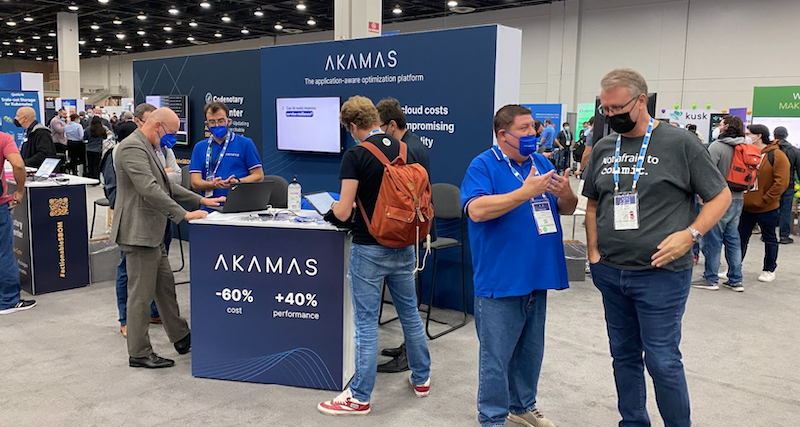
… and where is Akamas?
I believe we have embarked on a very interesting journey. Of course, we are perfectly aware that we at Akamas, joined by just a bunch of a few other companies and customers, are pioneers in a brand new approach and discipline to application performance and cost optimization based on AI.
While still being a small (and agile) company, in the last 18 months we had tremendous growth in terms of customer base, product adoption and tangible results. Please read more on our success stories and tangible results on optimizing Kubernetes applications on our website.
And we are proud of the innovation and quality we are delivering. In particular, last September we released version 3.0 of our AI-powered optimization platform which represents a major milestone for Akamas. With the introduction of live optimizations, Akamas now supports both pre-production and production environments, meaning live applications under varying workloads.
When applied to Kubernetes microservices applications, Akamas application-aware approach that operates both at infrastructure and application layer has been proven to allow companies to achieve cost efficiency and service quality without compromising on application performance and resilience. In addition to the above-mentioned interview by Scott, I would also point you to other interviews with the Akamas CTO, that is the TestGuild interview by Joe Colantonio and the TFIR article (also available in an extended version), and to the recent updated coverage paper by 451 Research which you also download from the Akamas website.
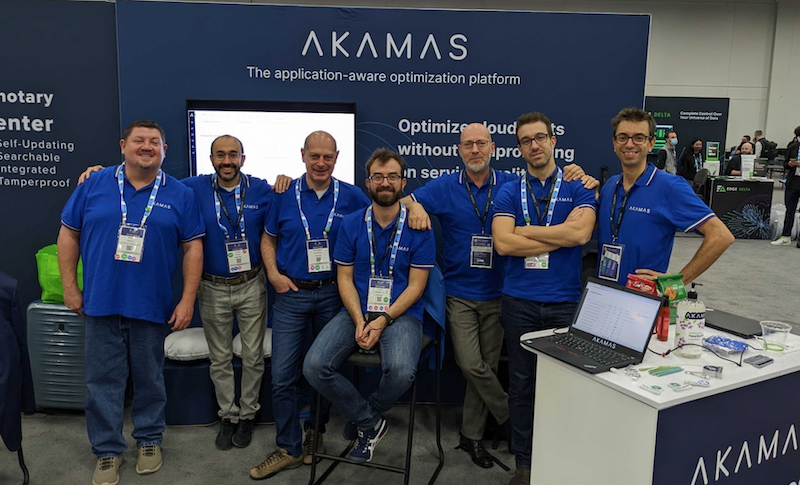
If you want to learn more join us for the upcoming Ignite by Akamas webinar currently planned for late January where we will share our stories of how Akamas live optimization helped customers to make their Kubernetes applications more efficient without compromising on quality.
Well, thanks for reading my notes! Feel free to send your comments directly to me or to Akamas.
And see you next year for the 2023 editions of KubeCon + CloudNativeCon in Amsterdam (April, 17–21) and Chicago (November, 6-11).
Stay tuned!
Curious about Akamas?
Book a demo.
Learn how it works in 20 minutes. No strings attached, no commitments.
Reading Time:
8 minutes
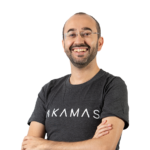
Author:
Luca Forni
Akamas CEO
Stay up to date!
Related resources
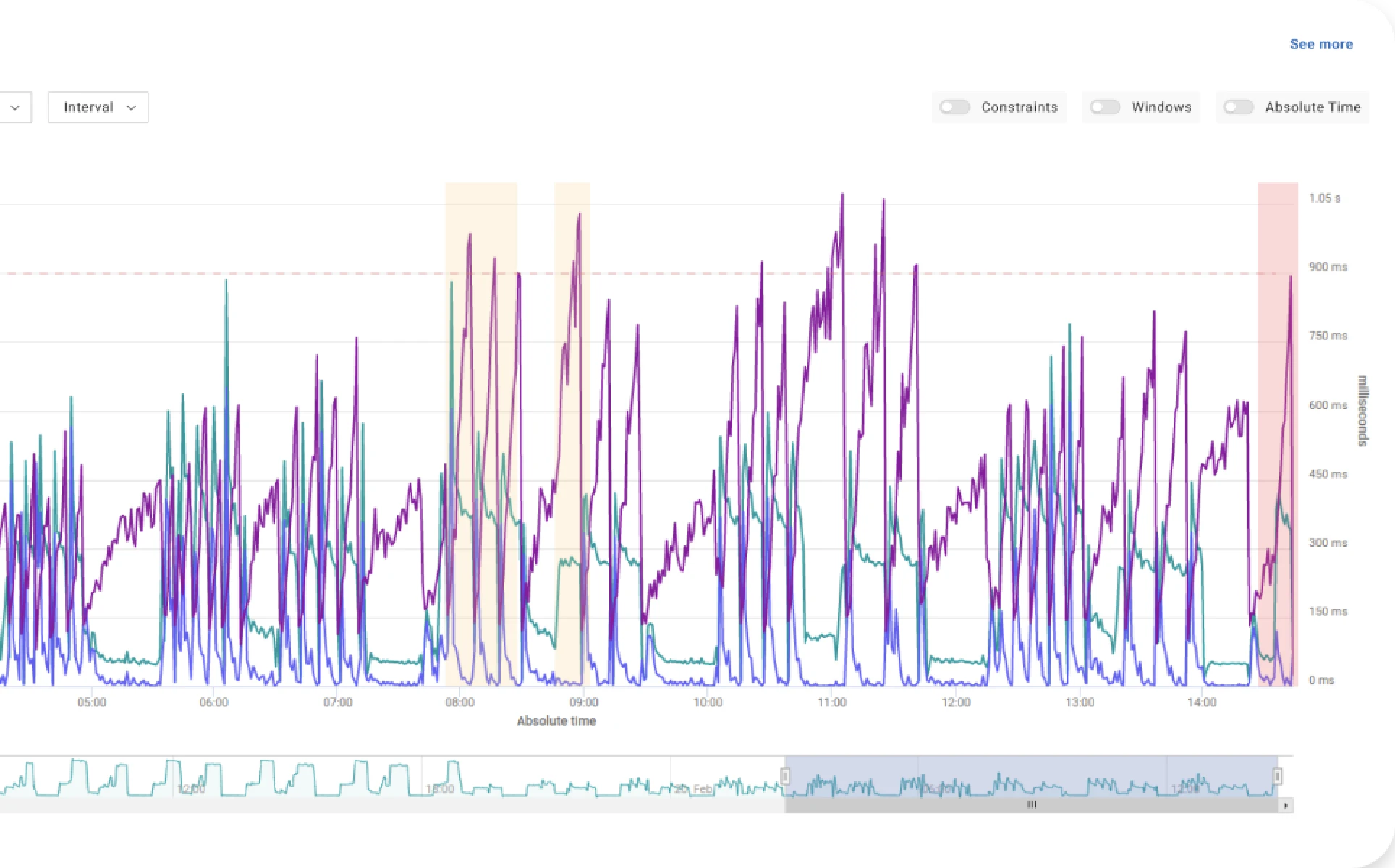
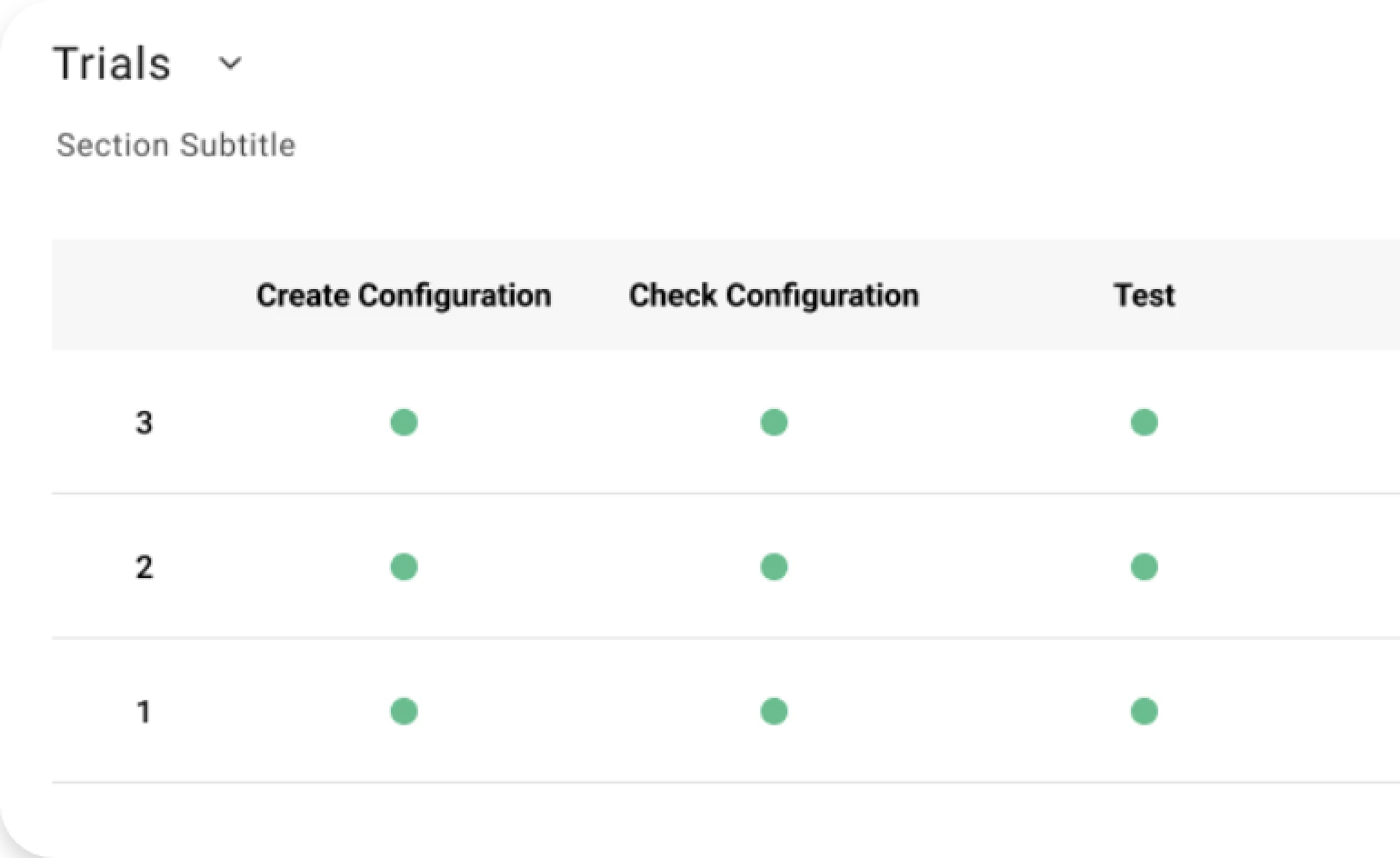
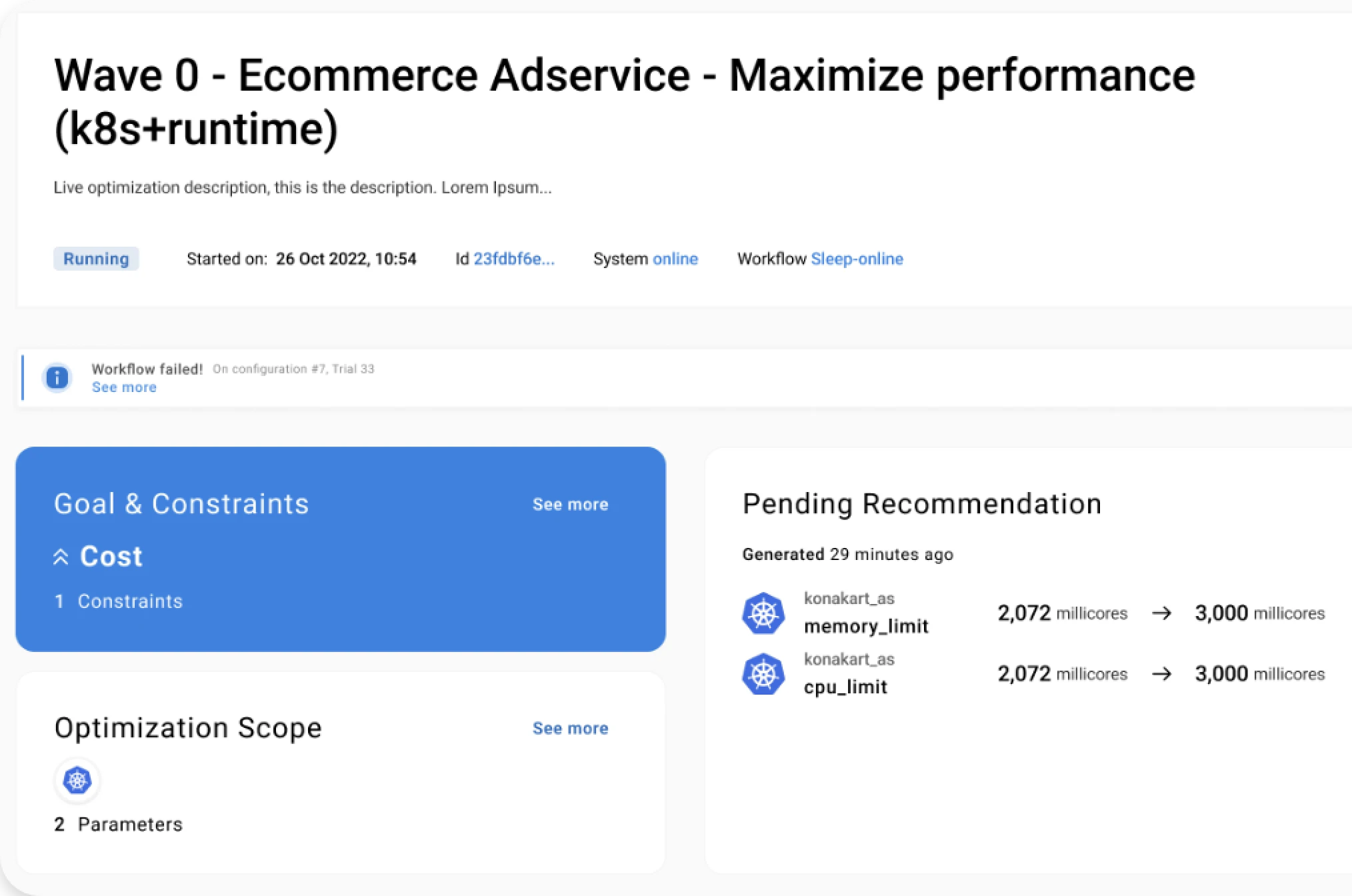
See for yourself.
Experience the benefits of Akamas autonomous optimization.
No overselling, no strings attached, no commitments.
© 2024 Akamas S.p.A. All rights reserved. – Via Schiaffino, 11 – 20158 Milan, Italy – P.IVA / VAT: 10584850969
